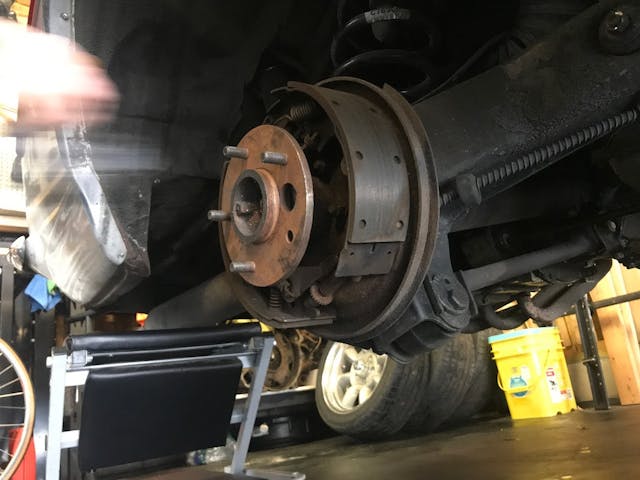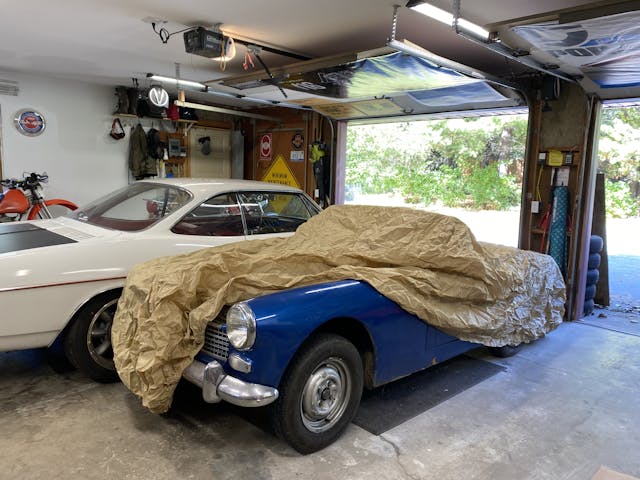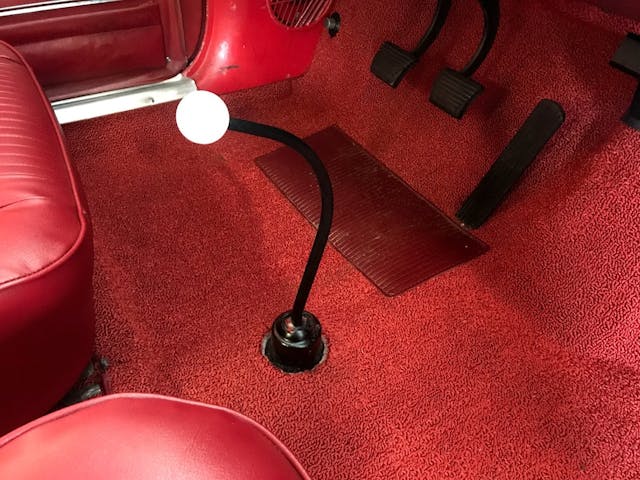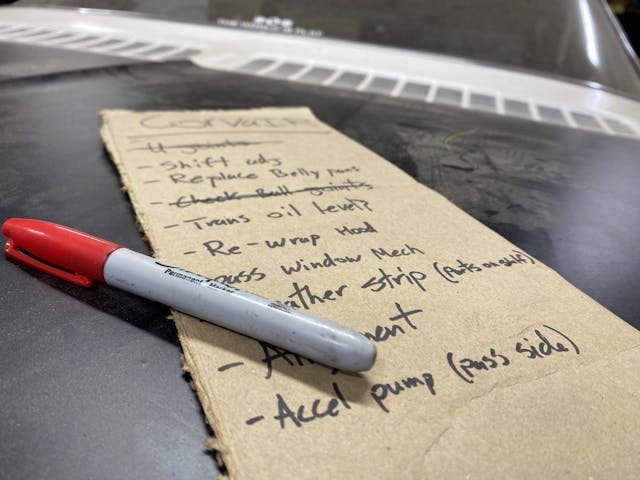6 underappreciated ways to winterize for storage
The fall colors are upon us, at least in the states where that kind of thing happens. That means the vintage rides are being prepped for storage as we collectively brace for the snow to fly and the salt to hit the roads. Hagerty has covered proper winterization methods and tips for your car in a multitude of ways, but here are a few suggestions that haven’t always made our lists but you should consider.
No parking brake

Opinions regarding the use of parking brakes can get oddly heated, so whether or not you should use yours regularly is a discussion for another day. The key thing here is to not set it and leave for months over the winter. If you’re worried about your car rolling from its parking spot, wheel chocks are a better option because the chance that your parking brake binds or seizes up over time is too great of a risk. It’s no fun finding your classic is garage-bound for an additional couple days or weeks for a brake job when all you want to do is drive in the spring.
Floor moisture

The enemy of any vintage car owner is rust, and the easiest way to keep it at bay is to keep things dry. Moisture can wreak havoc on multiple parts of a car, but it’s the underside and chassis that often end up paying the price when rust takes hold. If you aren’t lucky enough to have climate-controlled storage, consider laying down plastic sheeting before parking your car in its winter resting place. Whether the floor is dirt or concrete, moisture will rise up, and this plastic will help keep it from condensing on the bottom of the vehicle and take hold. The sheeting will also help keep the concrete from pulling moisture and oils from your tires, extending their life too.
UV control

Just like you want to protect the underside of your car, the top and interior need to be saved from invisible forces: UV light. Some garages have cave-like architecture, and therefore there’s no concern about sun wearing on your paint or interior, but if you’re parking a car in one spot for a long time, be sure to take into consideration where the sun hits it and what that might do. Faded and cracked interiors can be avoided with the right cover or some careful window blocking.
Deep clean

This one is simple. Vacuum and deep clean your interior. Don’t leave any debris or dirt in the nooks and crannies and allow it to take hold and stain or rot your interior surfaces. This will not only help keep the materials soft and supple during cold winter months, but it will also keep any small things from growing into stains that might require more work to remove in the spring or will attract rodents or vermin. Did you eat in your car this year? Get that french fry out from underneath the seat. You aren’t fooling anyone.
Top up
Not your fluids, but your convertible top, if you’ve got one. We’ve seen many a car with a nice cloth top that shrunk to the point that it is nearly unusable without extra hands helping to get the frame close enough to latch and risking a tear or two. Even if you live all summer with the top down, store your car with the top up. Most car covers are fitted to be used with the top up (you do have a car cover right?) and this yearly top-up time is also the perfect opportunity to lube all the pivot points before the long winter season.
Record your winter priorities

Planning to work on your ride at all over winter? Now is the time to make your to-do list and set your priorities while you can still do a last drive and any diagnostics that might require moving the car. Also think about how the car is placed into storage. Need to work on the engine but you backed into the garage, so now you have to walk around the car every time you need tools? Set yourself up for success and avoid that mistake by thinking through what you plan on doing and when.


i am a little late responding but then again the winterseason is upon us soon…another suggestion that seems to make sense is keeping every body part that is opening and closing and has a rubber weatherstripping/gasket surrounding it, NOT closed but slightly open so that the gasket does not get compressed all winter but can breath. It is recommended also not to put any stuff (grease, vaseline, W-40 etc) on the rubber as the ingredients may actually make the rubber deteriorate faster and also attracts dust and dirt particles: just keep it clean and dry